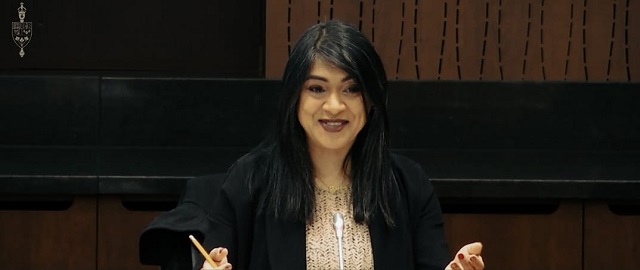COVID-19
2017 Influenza VS 2020 COVID19 – A comparison

We’ve all heard the claim “COVID19 is no worse than the flu”.
Is this true? Now that COVID19 has been around for about a year we can look at the numbers and make some definitive observations.
The first case of COVID19 in Canada was reported by Health Canada on Jan. 25, in a Toronto man who had recently travelled from Wuhan. Nine months later, COVID19 has swept the country, devastated economies, and is responsible for the death of over 12,000 Canadians. In some areas measures to control the spread seem to be working, in other areas despite a range of measures, it’s spreading rapidly. There’s still so many unknowns and COVID19 remains nearly as mysterious as when it first appeared. As usual in a situation where knowledge is lacking, fear is not. The Canada Suicide Prevention Service reported to the Canadian Press that in September, 18% of their calls came from people worried about their finances while 26% of their calls were from people very worried that they or someone close to them would contract COVID-19. It’s very likely the claim COVID is no worse than the flu is an understandable response and an attempt to calm this “fear of the unknown”. It is true that so far the survival rate is closer to 100% than it is to 99% for those of us under the age of 60, but can we truly compare COVID and influenza?
The first thing we have to do is dismiss any comparisons with the 1918 Spanish Flu Pandemic
The only other time millions of Canadians tried to protect themselves with masks was during the 1918 Spanish Flu Pandemic. Actually there is no comparison between the severity of these 2 viruses. The 1918 Spanish Flu was FAR more devastating. We can put this comparison to rest immediately. According to government figures the 1918 ” international pandemic killed approximately 55,000 people in Canada, most of whom were young adults between the ages of 20 and 40.” As of early December, COVID19 is responsible for under 12,500 deaths in Canada. There are fewer deaths (so far) and the age group most severely attacked is much, much older. The majority of COVID19 fatalities are at, or above the life expectancy of Canadians (82.37 years of age in 2019).
So what about the regular flu? Is it true that COVID19 is no worse that the (regular) flu?
Well if you’re going to make a claim that the flu is as bad as COVID19 you’d better pick a pretty bad flu season to compare. 2017 was a bad year for the flu in Alberta. About the worst in the past 10 years. According to the 2017 Seasonal Influenza Summary Reports on the Alberta Health Website:
2017 Influenza – 9,069 laboratory-confirmed influenza cases (the largest number of cases in the previous five seasons)
2017 Influenza – 3,053 hospitalizations, 242 ICU admissions and 92 deaths
Compare these numbers to the stats from the Province of Alberta’s COVID19 website.
2020 COVID19 (to Dec 4) – 64,261 positive tests
2020 COVID19 (to Dec 4) – 2,096 hospitalizations, 379 ICU admissions and 590 deaths.
Up to December 4 there were actually more people hospitalized due to the flu in the 2017 / 2018 season, but that number looks like it will tip toward COVID19 in the next week or less. The other numbers swing heavily toward COVID19 being worse than the flu. Furthermore, it’s important to note COVID19 is NOT behind us yet. So while the numbers here are current to the beginning of December, it could be nearly another year (when vaccines have been widely distributed everywhere) before we’re more-less finished with COVID19 in this first series of waves.
Our final answer
Within the next week or so (after 58 more people are hospitalized) COVID19 will conclusively be worse and in the end far worse than the flu in every category our health system measures.
Interesting Final Note
Having said all this, a remarkable thing is happening with the 2020 flu season. So far there isn’t one. According to Health Canada’s weekly FluWatch Report as of the end of November there is no evidence of community circulation of the flu virus in Canada. Officials are not sure why but they suggest the lack of positive flu tests may be related to the existence of COVID19.
Brownstone Institute
Deborah Birx Gets Her Close-Up

From the Brownstone Institute
BY
According to Birx, she intentionally buried the more draconian elements of the lockdowns in text at the end of long documents, theorizing (correctly apparently) that most reporters or readers would just “skim” the document and would not focus on how extreme and unprecedented these mandates actually were.
Most Americans will remember Dr. Deborah Birx as the “scarf lady” who served on the White House’s Covid Response Team beginning in February 2020.
According to a recently-released (but little-seen) 24-minute mini-documentary, it was Birx – even more so than Anthony Fauci – who was responsible for government “guidelines,” almost all of which proved to be unnecessary and disastrous for the country.
According to the documentary, the guidelines ran counter to President Trump’s initial comments on Covid, but ultimately “toppled the White House (and Trump) without a shot being fired.”
The mini-documentary (“It Wasn’t Fauci: How the Deep State Really Played Trump”) was produced by Good Kid Productions. Not surprisingly, the scathing 24-minute video has received relatively few views on YouTube (only 46,500 since it was published 40 days ago on Feb. 26).
I learned of the documentary from a colleague at Brownstone Institute, who added his opinion that “Birx (is) far more culpable than Fauci in the Covid disaster…Well worth the time to see the damage an utter non-scientist, CIA-connected, bureaucrat can do to make sure things are maximally bad.”
I agree; the significant role played by Birx in the catastrophic national response to Covid has not received nearly enough attention.
Brought in from out of Nowhere…
From the video presentation, viewers learn that Birx was added to the White House’s Coronavirus Task Force as its coordinator in latter February 2020.
Birx worked closely with Task Force chairman Vice President Mike Pence, a man one suspects will not be treated well by future historians.
According to the documentary, “career bureaucrats” like Birx somehow seized control of the executive branch of government and were able to issue orders to mayors and governors which effectively “shut down the country.”
These bureaucrats were often incompetent in their prior jobs as was Birx, who’d previously served as a scientist (ha!) in the Army before leading the government’s effort to “fight AIDS in Africa” (via the PEPFAR Program).
When Birx was installed as coordinator of Covid Response she simply rehashed her own playbook for fighting AIDS in Africa, say the filmmakers.
The three tenets of this response were:
- “Treat every case of this virus as a killer.”
- “Focus on children,” who, the public was told, were being infected and hospitalized in large numbers and were a main conduit for spreading the virus.
- “Get to zero cases as soon as possible.” (The “Zero Covid” goal).
The documentary primarily uses quotes from Scott Atlas, the White House Task Force’s one skeptic, to show that all three tenets were false.
Argued Atlas: Covid was not a killer – or a genuine mortality risk – to “99.95 percent” of the population. Children had virtually zero risk of death or hospitalization from Covid. And there was no way to get to “zero cases.”
Atlas Didn’t Shrug, but was Ignored…
Furthermore, the documentary convincingly illustrates how the views of Atlas were ignored and how, at some point, his ability to speak to the press was curtailed or eliminated.
For example, when Atlas organized a meeting for President Trump with Covid-response skeptics (including the authors of the Great Barrington Declaration) this meeting was schedule to last only five minutes.
The documentary also presents a report from the inspector general of the Department of State that was highly critical of Birx’s management style with the African “AIDS relief” program she headed.
Among other claims, the report said she was “dictatorial” in her dealings with subordinates and often “issued threats” to those who disagreed with her approach.
Shockingly, this highly-critical report was published just a month before she was appointed medical coordinator of the Coronavirus Task Force.
A particularly distressing sound bite from Birx lets viewers hear her opinion on how controversial “guidance” might be implemented with little pushback.
According to Birx, she intentionally buried the more draconian elements of the lockdowns in text at the end of long documents, theorizing (correctly apparently) that most reporters or readers would just “skim” the document and would not focus on how extreme and unprecedented these mandates actually were.
The documentary points out that Birx’s prescriptions and those of President Trump were often in complete conflict.
Birx, according to the documentary, once pointed this out to Vice President Pence, who told her to keep doing what she believed.
Indeed, the Vice President gave Birx full use of Air Force 2 so she could more easily travel across the country, spreading her lockdown message to governors, mayors, and other influencers.
Several Covid skeptic writers, including Jeffrey Tucker of Brownstone Institute, have noted that President Trump himself went from an opponent of draconian lockdowns to an avid supporter of these responses in a period of just one or two days (the pivotal change happened on or around March 10th, 2020, according to Tucker).
Whoever or whatever caused this change in position, it does not seem to be a coincidence that this about-face happened shortly after Birx – a former military officer – was named to an important position on the Task Force.
(Personally, I don’t give Anthony Fauci a pass as I’ve always figured he’s a “dark master” at manipulating members of the science/medical/government complex to achieve his own desired results.)
This documentary highlights the crucial role played by Deborah Birx and, more generally, how unknown bureaucrats can make decisions that turn the world upside-down.
That is, most Americans probably think presidents are in charge, but, often, they’re really not. These real rulers of society, one suspects, would include members of the so-called Deep State, who have no doubt installed sycophants like Fauci and Birx in positions of power.
I definitely recommend this 24-minute video.
A Sample of Reader Comments…
I also enjoyed the Reader Comments that followed this video. The first comment is from my Brownstone colleague who brought this documentary to my attention:
“… As I said, things can change over the period of 20 years but in the case of Birx/Fauci, I do not believe so. I have never seen people entrenched in the bureaucracy change.”
Other comments from the people who have viewed the mini-documentary on YouTube:
“Pence needs to be held accountable.”
“What does Debbie’s bank account look like?”
“(The) final assessment of President Trump at the 23:30 mark is, while painful, accurate. He got rolled.”
“This is very hard to find on YouTube. You can literally search the title and it doesn’t come up.”
“Excellent summary, hope this goes viral. Lots of lessons to learn for future generations.”
“Eye opening. Great reporting.”
Post from One Month Ago…
“37 likes after 3 years of the most controversial and divisive action in recent history. How can this be?”
“Oh never mind. YouTube hid it from the public for years.”
“Probably hasn’t been taken down yet for that reason, relatively low views.”
“Thanks for this! Sounds like everyone below President Trump was on a power trip and I didn’t think it was possible to despise Pence more than I already do.”
“…the backing of CDC, legacy media, WHO and government schools, business folding in fear are ALL responsible. Accountability for every person and agency is paramount!”
“Should be noted that her work on AIDS in Africa was just as useless and damaging.”
“First, any mature, adult woman who speaks with that much vocal fry should be immediately suspect. And the glee with which she recounts her role at undermining POTUS is remarkable and repulsive. This woman should NEVER be allowed to operate the levers of power again.”
Republished from the author’s Substack
COVID-19
CDC Quietly Admits to Covid Policy Failures

From the Brownstone Institute
BY
Instead of admitting policy error that the Covid vaccines do not much control virus spread, our public health administration doubled down, attempting then to compel vaccination on as many more people as could be threatened by mandates.
In so many words—and data—CDC has quietly admitted that all of the indignities of the Covid-19 pandemic management have failed: the masks, the distancing, the lockdowns, the closures, and especially the vaccines; all of it failed to control the pandemic.
It’s not like we didn’t know that all this was going to fail, because we said so as events unfolded early on in 2020, that the public health management of this respiratory virus was almost completely opposite to principles that had been well established through the influenza period, in 2006. The spread of a new virus with replication factor R0 of about 3, with more than one million cases across the country by April 2020, with no potentially virus-sterilizing vaccine in sight for at least several months, almost certainly made this infection eventually endemic and universal.
Covid-19 starts as an annoying, intense, uncomfortable flu-like illness, and for most people, ends uneventfully 2-3 weeks later. Thus, management of the Covid-19 pandemic should not have relied upon counts of cases or infections, but on numbers of deaths, numbers of people hospitalized or with serious long-term outcomes of the infection, and of serious health, economic, and psychological damages caused by the actions and policies made in response to the pandemic, in that order of decreasing priorities.
Even though numbers of Covid cases correlate with these severe manifestations, that is not a justification for case numbers to be used as the actionable measure, because Covid-19 infection mortality is estimated to range below 0.1% in the mean across all ages, and post-infection immunity provides a public good in protecting people from severe reinfection outcomes for the great majority who do not get serious “long-Covid” on first infection.
Nevertheless, once the Covid-19 vaccines were rolled out, with a new large wave of the Delta strain spreading across the US in July-August 2021 even after eight months of the vaccines taken by half of Americans, instead of admitting policy error that the Covid vaccines do not much control virus spread, our public health administration doubled down, attempting then to compel vaccination on as many more people as could be threatened by mandates. That didn’t work out too well as seen when the large Omicron wave hit the country during December 2021-January 2022 in spite of some 10% more of the population getting vaccinated from September through December of 2021.
A typical mandate example: in September 2021, Washington Governor Jay Inslee issued Emergency Proclamation 21-14.2, requiring Covid-19 vaccination for various groups of state workers. In the proclamation, the stated goal was, “WHEREAS, COVID-19 vaccines are effective in reducing infection and serious disease, and widespread vaccination is the primary means we have as a state to protect everyone…from COVID-19 infections.” That is, the stated goal was to reduce the number of infections.
What the CDC recently reported (see chart below), however, is that by the end of 2023, cumulatively, at least 87% of Americans had anti-nucleocapsid antibodies to and thus had been infected with SARS-CoV-2, this in spite of the mammoth, protracted and booster-repeated vaccination campaign that led to about 90% of Americans taking the shots. My argument is that by making policies based on number of infections a higher priority than ones based on the more serious but less common consequences of both infections and policy damages, the proclaimed goal of the vaccine mandate to reduce spread failed in that 87% of Americans eventually became infected anyway.

In reality, neither vaccine immunity nor post-infection immunity were ever able fully to control the spread of the infection. On August 11, 2022, the CDC stated, “Receipt of a primary series alone, in the absence of being up to date with vaccination* through receipt of all recommended booster doses, provides minimal protection against infection and transmission (3,6). Being up to date with vaccination provides a transient period of increased protection against infection and transmission after the most recent dose, although protection can wane over time.” Public health pandemic measures that “wane over time” are very unlikely to be useful for control of infection spread, at least without very frequent and impractical revaccinations every few months.
Nevertheless, infection spread per se is not of consequence, because count of infections is not and should not have been the main priority of public health pandemic management. Rather, the consequences of the spread and the negative consequences of the policies invoked should have been the priorities. Our public health agencies chose to prioritize a failed policy of reducing the spread rather than reducing the mortality or the lockdown and school and business closure harms, which led to unnecessary and avoidable damage to millions of lives. We deserved better from our public health institutions.
Republished from the author’s Substack
-

 Housing2 days ago
Housing2 days agoTrudeau admits immigration too much for Canada to ‘absorb’ but keeps target at record high
-

 Censorship Industrial Complex2 days ago
Censorship Industrial Complex2 days agoTrudeau’s new online censorship law – Problems with Bill C-63 / the Online Arms Law
-

 Business2 days ago
Business2 days agoDecarbonization deal opens new chapter in Alberta-Japan relationship
-

 2024 City Councilor By-Election2 days ago
2024 City Councilor By-Election2 days agoGet to know your candidates for city council: Calvin Yzerman
-

 2024 City Councilor By-Election2 days ago
2024 City Councilor By-Election2 days agoGet to know your candidates for city council: Liam (The Level) Milaney
-

 Bruce Dowbiggin2 days ago
Bruce Dowbiggin2 days agoSorry, Justin. Social Media Won’t Give You A Mulroney Epitaph
-

 MAiD2 days ago
MAiD2 days agoCanadian judge blocks imminent euthanasia death of 27-year-old autistic woman
-

 National2 days ago
National2 days agoPROC – The Uninvited Ovation of the notorious Waffen-SS at the HoC








